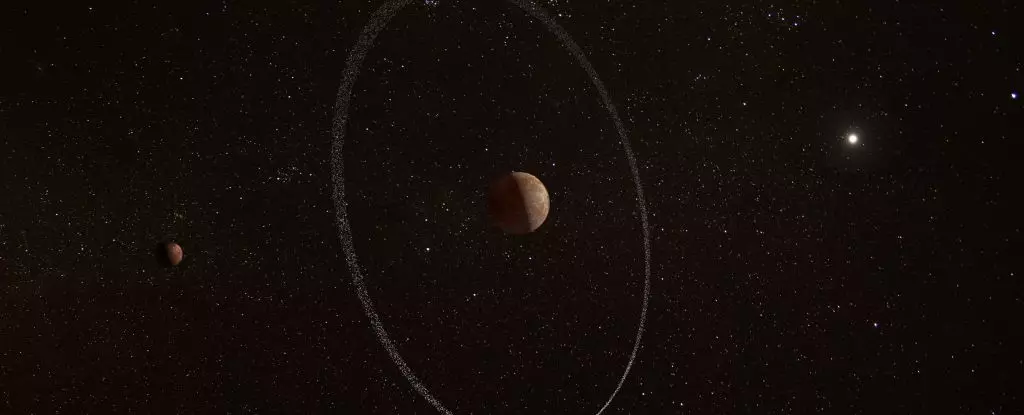The Solar System is home to a vast array of moons with unique characteristics. However, one peculiar anomaly stands out – the absence of ringed moons. While half of the planets in our Solar System boast rings of dust and ice around their equator, not a single moon has been discovered with a ring system. This raises an intriguing question: why do moons in the Solar System lack rings despite their prevalence elsewhere?
A group of astrophysicists led by Mario Sucerquia from the Adolfo Ibáñez University delved into this mystery by exploring the possibility of ringed moons outside the Solar System, known as cronomoons. Their research aimed to uncover the underlying dynamical reasons that prevent ring formation or long-term stability around moons. The team hypothesized that if a moon beyond our Solar System possessed a large ring system, it could obstruct enough starlight to be detected. This led them to question whether the absence of moon rings in our Solar System was due to a fundamental limitation.
To address this conundrum, the researchers conducted N-body simulations to assess the feasibility of ring formation around different moons in our Solar System. They considered various factors that could contribute to ring formation, such as geological activity and gravitational interactions with neighboring moons. Surprisingly, the simulations revealed that despite the complex gravitational environment of moons in our Solar System, ring structures remained stable in many scenarios. This unexpected finding challenged the conventional belief that moon rings were inherently unstable.
Evidence of Past Rings
Certain features observed on Solar System moons suggest the existence of past ring systems. Debris orbiting Saturn’s moon Rhea and the equatorial ridge on Saturn’s moon Iapetus are believed to be remnants of former ring structures. These findings imply that moon rings may have existed in the past but were gradually lost due to factors like radiation pressure, magnetic fields, and internal heating. The researchers propose that our current observations might be skewed by the absence of moon rings during the period when we began studying the Universe.
Implications for Future Research
Moving forward, further investigations are needed to unravel the mystery of moon rings in the Solar System. By incorporating additional parameters like radiation pressure and magnetic fields, researchers aim to gain a deeper understanding of the factors influencing ring formation around moons. Studying the moons more closely for potential evidence of past ring systems, such as Iapetus’ ridge, could provide valuable insights. Moreover, the search for ringed moons around exoplanets orbiting distant stars offers a promising avenue for expanding our knowledge of cosmic ring systems.
As we ponder the absence of moon rings in our Solar System, we contemplate the alternate realities where moons are adorned with majestic rings. The cultural and mythological significance of moon rings on other worlds sparks curiosity about the untold stories that might arise. Perhaps, the absence of moon rings in our own lunar tales leaves us wondering about the diverse narratives that could have emerged if our Moon had been adorned with rings.


Leave a Reply